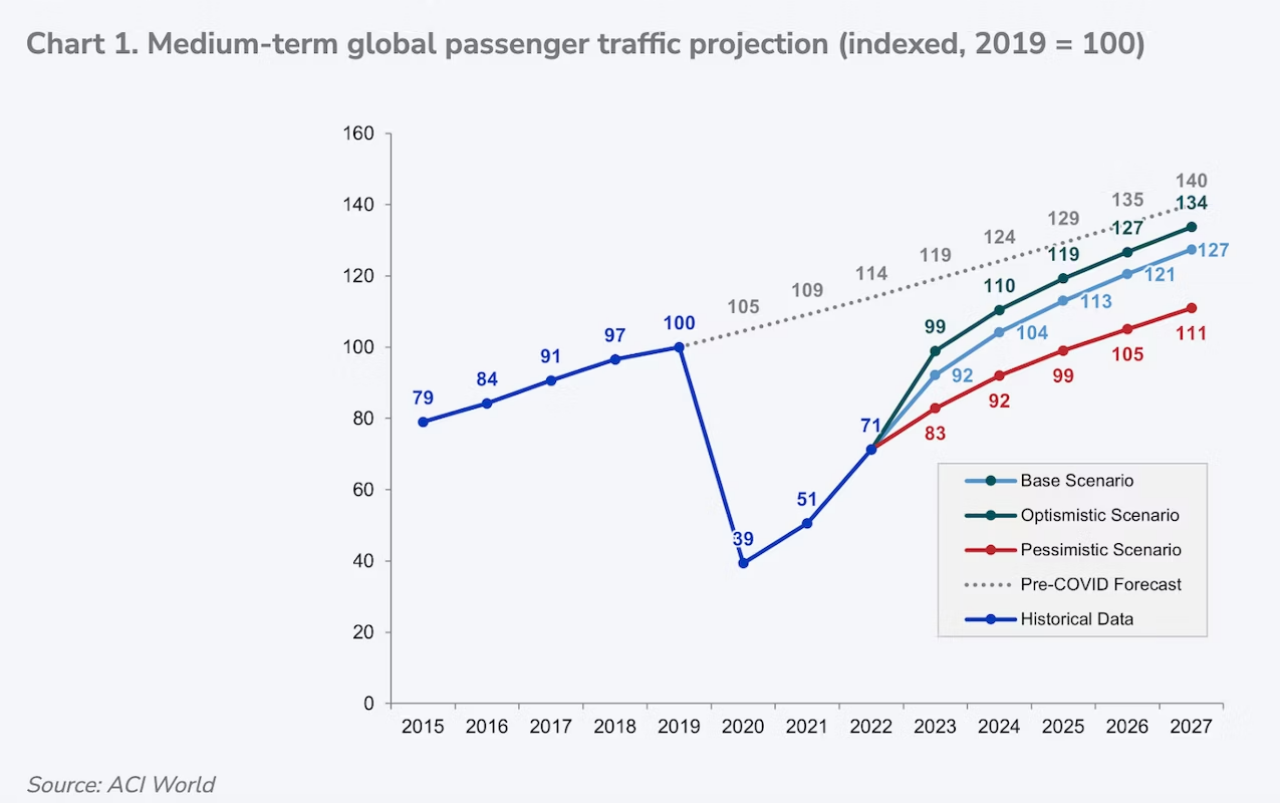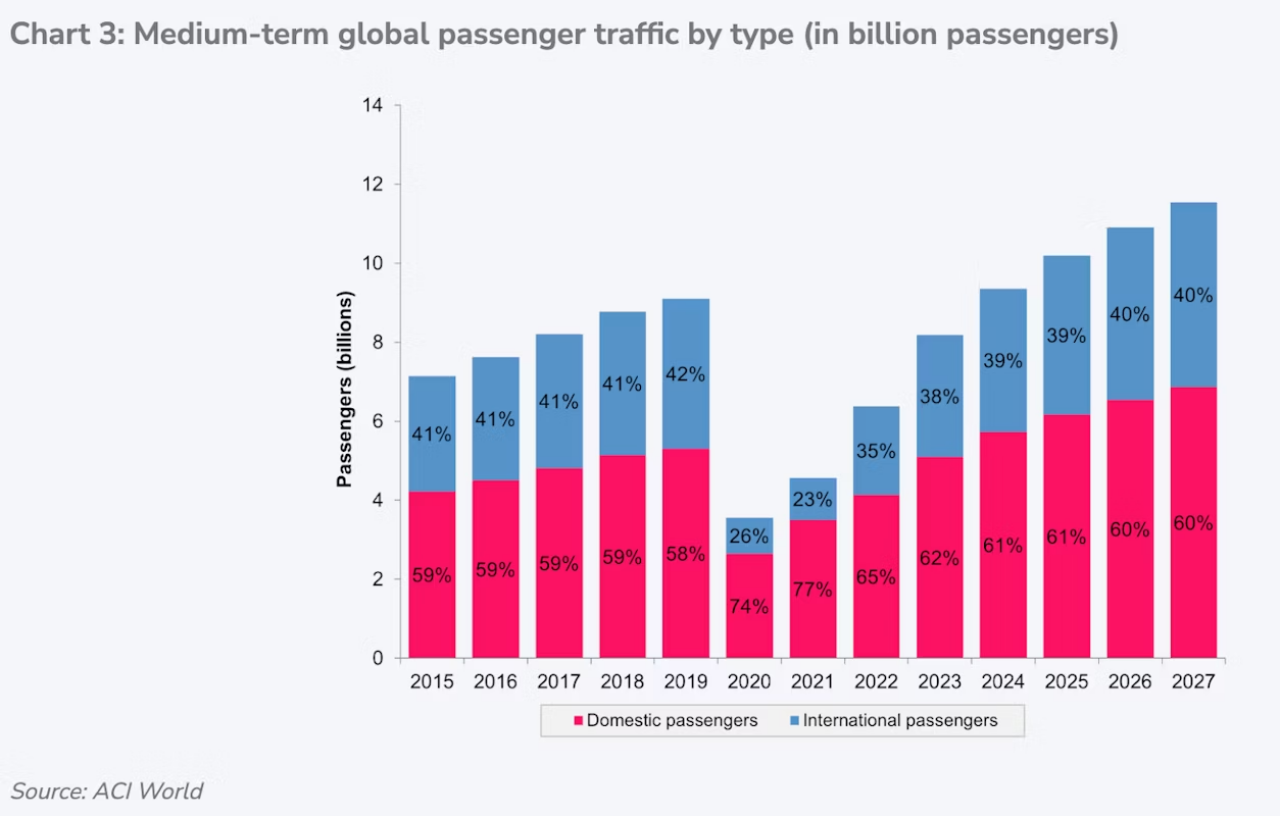Source: ACI World
Ongoing obstacles: Volatile prices and supply chains
However, it won’t be all plain sailing for airports, even in the face of this positive travel recovery.
Continuing global economic volatility can impact consumer and business confidence, leading to a drop in travel demand. Moreover, inflation, increased interest rates and fluctuating energy costs can generate higher ticket prices, making travel more costly for passengers.
Economic uncertainty also impacts supply chains and there’s always potential for further disruptions in terms of the availability of essential resources, spare parts and maintenance services.
Furthermore, rising interest rates and stricter monetary policies impact the disposable income of passengers. When surging jet fuel prices and their impact on airfares are added to the mix, it could well be that air transport demand takes a hit.
Having said that, IATA contended that the strong thirst for leisure travel in the first half of 2023 paved the way for a healthy remainder of the year in many markets.
The future trajectory
There are some global trends in the aviation industry that are now in the spotlight that airports can benefit from. We discuss these more fully in the report, but in brief, these are:
- Making the travel experience personal: Airports tailoring their services to cater to different passenger segments.
- The mounting digital transformation: The use of AI and smart algorithms to personalise the passenger journey, drive operational efficiency and generate ancillary revenue.
- Baggage tracking: The use of advanced tracking technologies to improve baggage tracking.
- Digital identities: Meeting the demand of younger passengers for digital identities to enhance their travel journeys.
- Cyber security: The growing need to enhance airport cyber protection measures and to meet regulatory frameworks around the world.
- Implanting sustainability into the airport ecosystem: By building climate-positive cultures and educating employees about the importance of sustainability.
The world remains vulnerable to global instability occasioned by ongoing global conflicts and macroeconomic stresses. But airports are showing their resilience and adaptability by reevaluating their entire operations and systems in light of insights they have gained from previous disruptions.
To find out more about the state of airports now and in the near future, read our full report.






